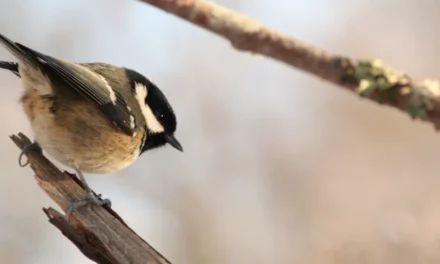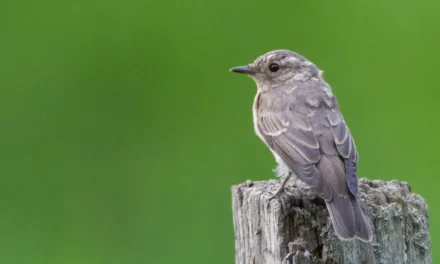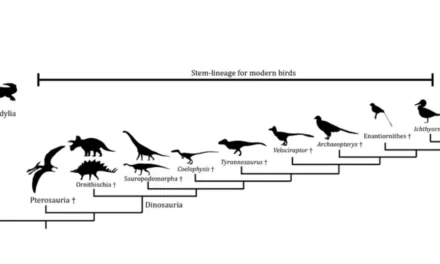What the European Crested Tit looks like
The European Crested Tit is easily recognizable by its striking black and white crest, a prominent feature that gives the bird its name. The crest of the female is shorter than that of the male, helping to distinguish between the sexes. Other notable features include a thin black collar and a small black bib. The bird also sports a delicate black crescent on its white cheeks. Its back is a subtle brown-gray, while the belly is a soft white-beige.

How the European Crested Tit behaves
The European Crested Tit is often hard to spot as it tends to hide in the high branches of conifers, foraging for food. Despite this, it can sometimes be seen at bird feeders, where it might appear as part of a pair. Its preference for elevated and secluded areas makes it a unique challenge for birdwatchers.
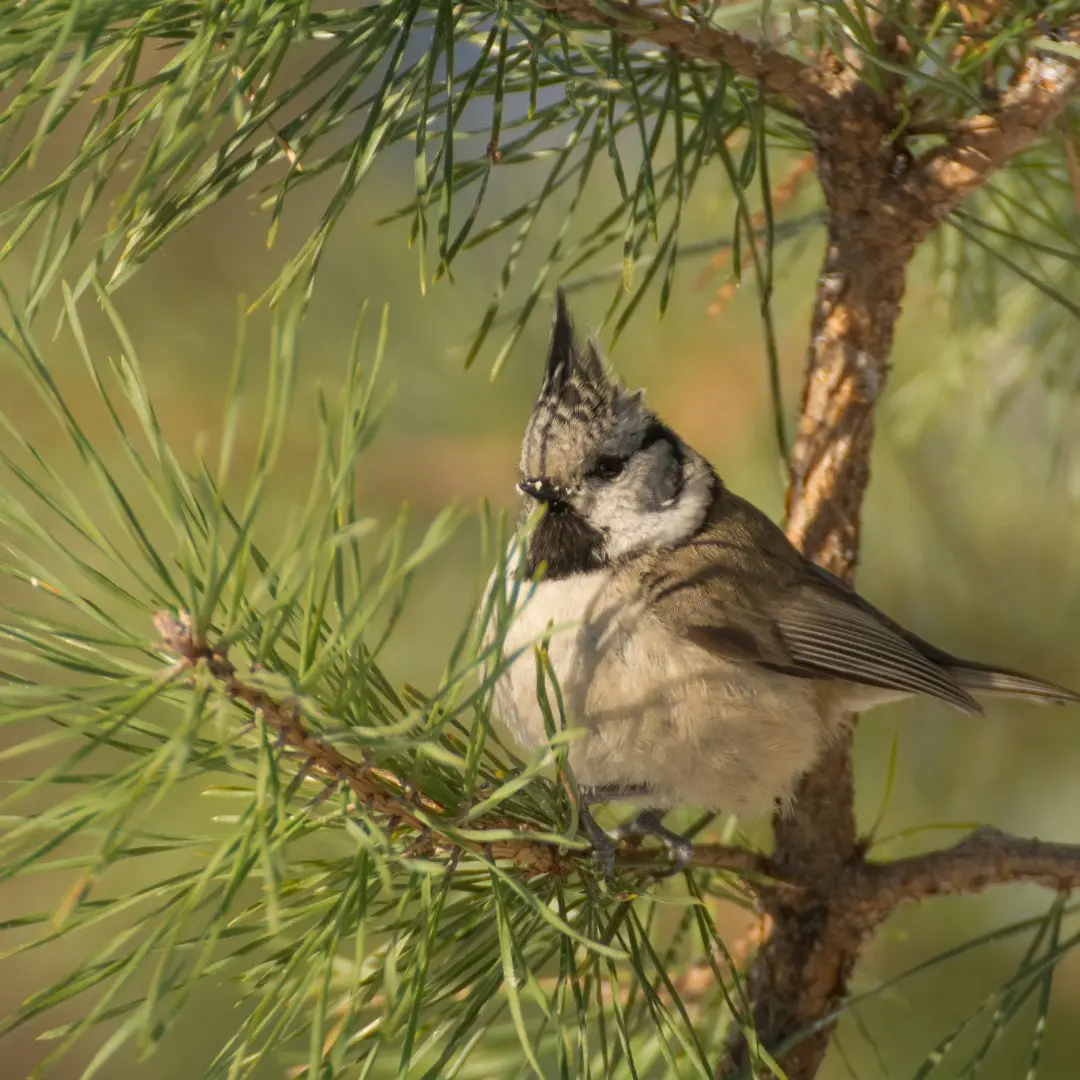
The songs and calls of the European Crested Tit
Among tit species, the European Crested Tit’s song is quite distinctive. It emits a repetitive, high-pitched call that often ends with a rolled sound, repeated two or three times. Bird enthusiasts can identify it by the sound pattern: “tsi tsi tsigurrr... tsigurr... tsi tsi tsi tsigurrr.” This melodic tune adds charm to its already fascinating character.
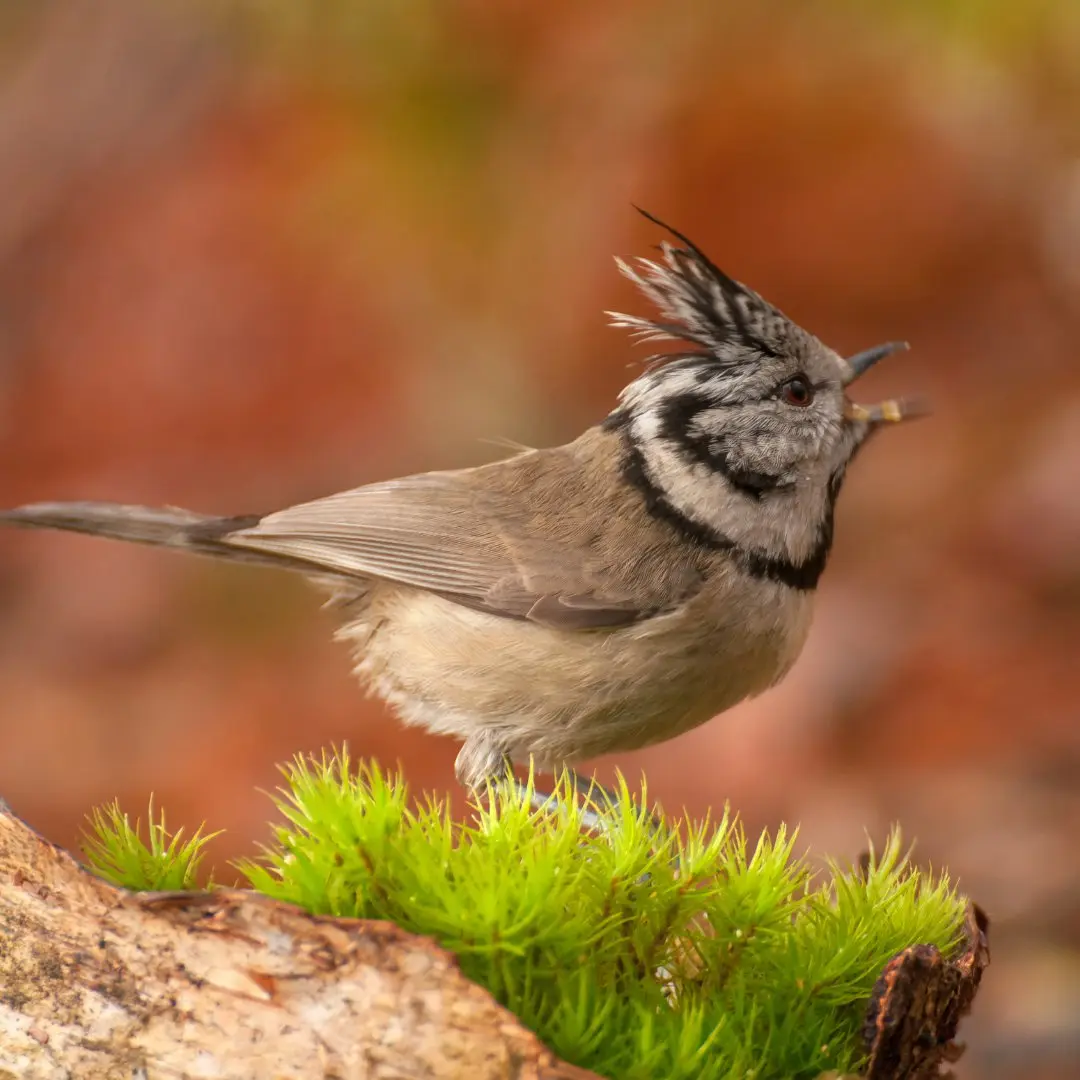
How the European Crested Tit reproduces
The breeding season for the European Crested Tit spans from March to July. It produces one brood per year, typically consisting of 5 to 8 white eggs speckled with reddish. The nest is cup-shaped and crafted with moss, spider webs, and down, ensuring warmth for the eggs. To attract the female, the male performs an elaborate display, raising his crest and fluttering his wings.
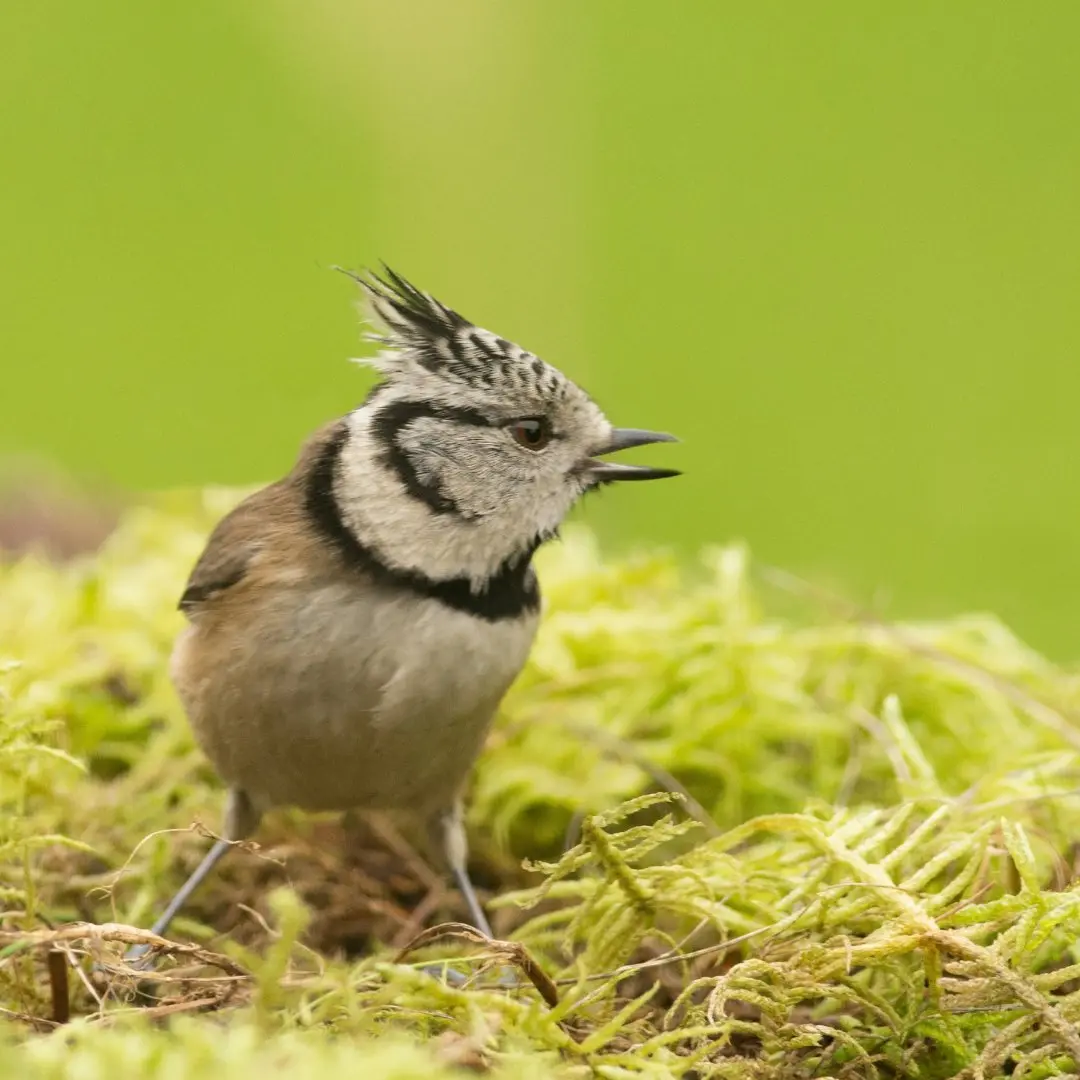
What the European Crested Tit eats
The European Crested Tit’s diet varies by season. In the warmer months, it actively seeks small insects, larvae, and spiders in the upper parts of trees. During winter, it shifts to consuming pine seeds. In gardens, it is particularly attracted to fat balls. Like the Coal Tit, it is known to store food in small crevices or under the bark of conifers for later consumption.
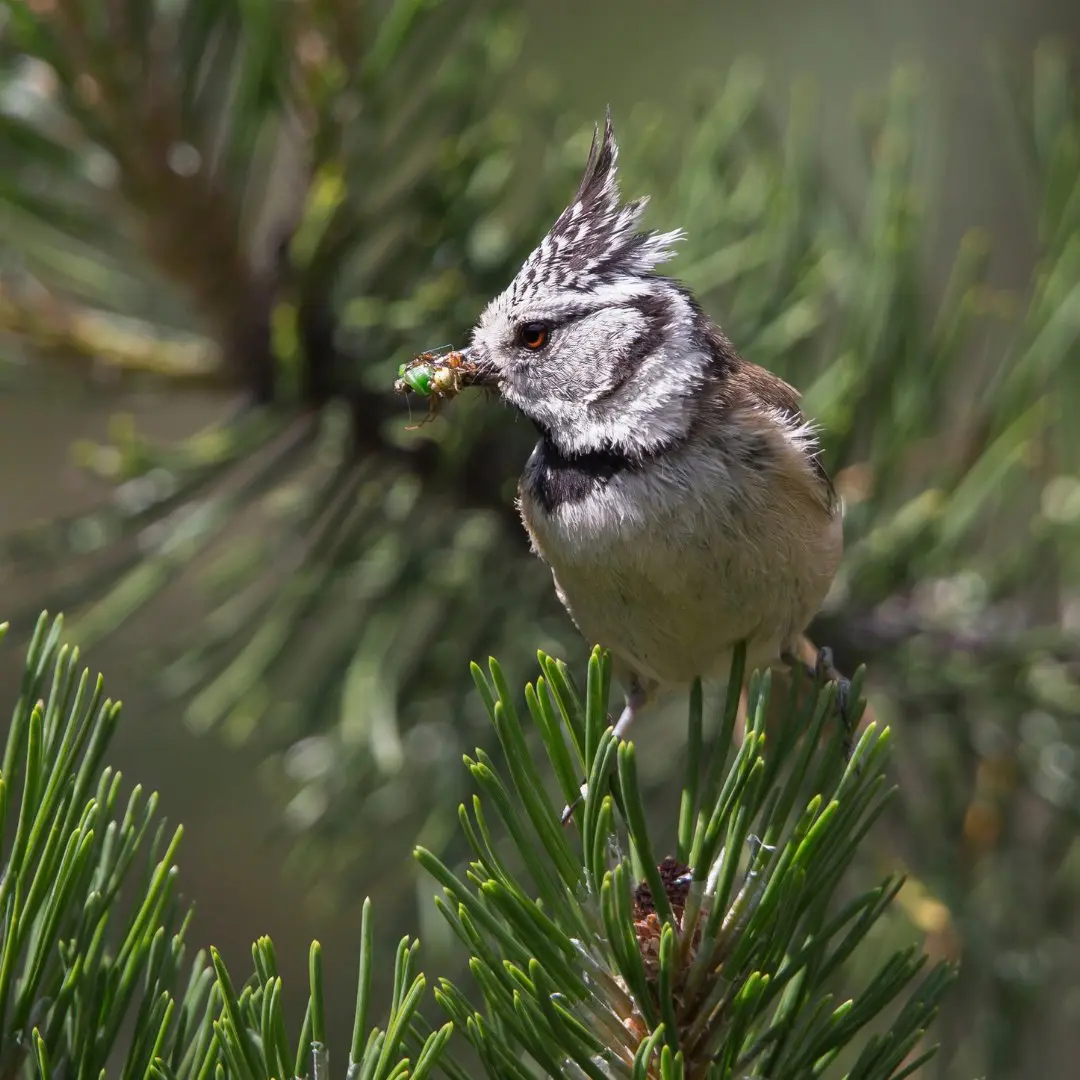
Where to find the European Crested Tit
This bird is predominantly found in conifer forests, although it can also be seen in deciduous forests, parks, and gardens if conifers are present nearby. The female has the remarkable ability to dig a hole with her beak to create a nesting site. Alternatively, the European Crested Tit may nest in woodpecker holes or man-made nest boxes. Well adapted to cold climates, it can thrive in mountain regions up to 2300 meters in altitude. Being sedentary, this species rarely strays far from where it was born.
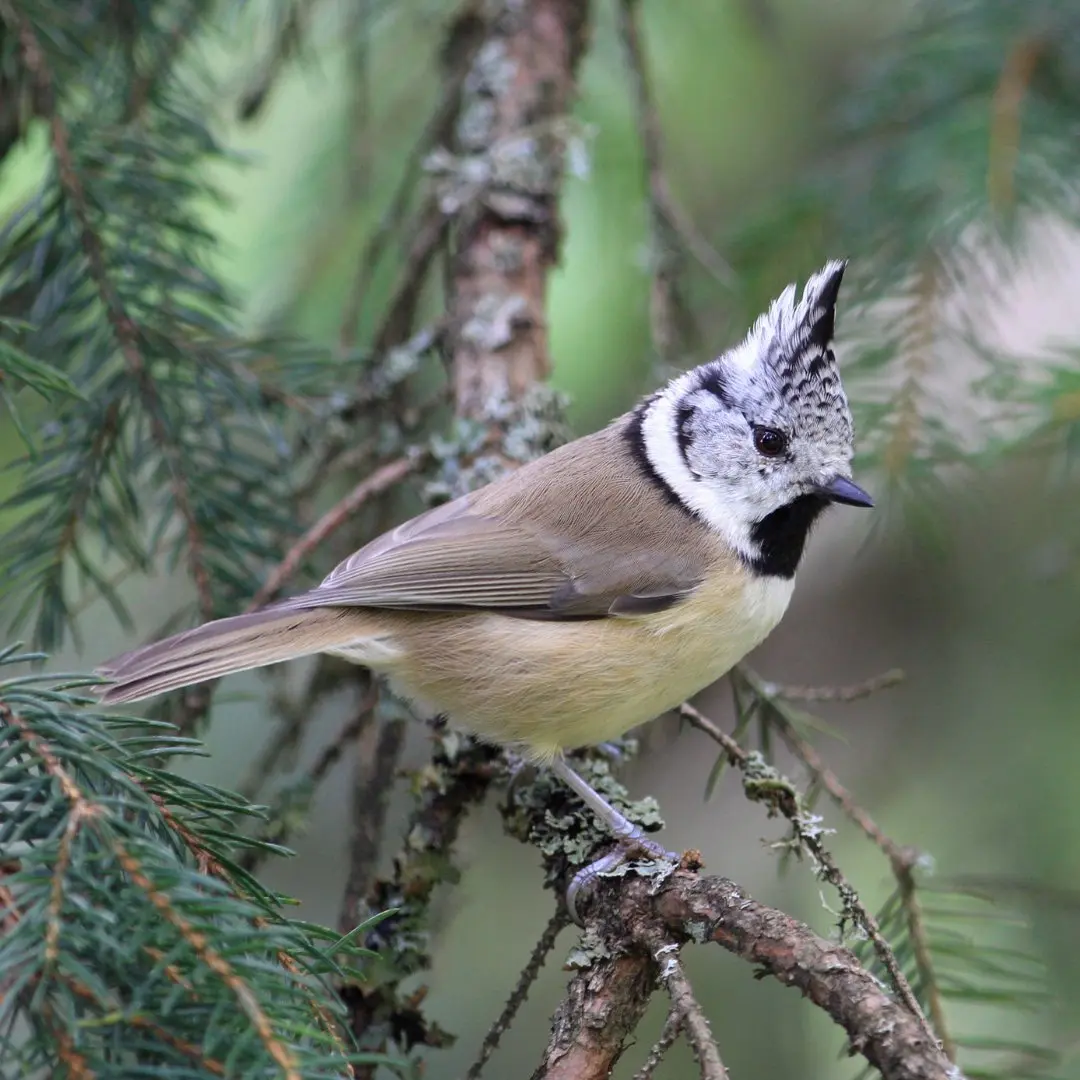
-



